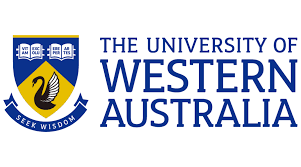University of Western Australia: Some more prone to tendon and ligament injuries
A study by The University of Western Australia (UWA), Perron Institute, Paracelsus Medical University (Austria) and Nanjing University (China) has identified a protein that reacts to stresses on tendons and ligaments and plays a key role in how our body responds to them.
The protein, Secreted Protein Acidic and Rich in Cysteine (SPARC), is linked to a person’s genetic makeup and could explain why some people are moreprone to tendon and ligament injuries.
Tendon and ligament injuries occur in the soft tissues that connect muscles and joints and are one of the most common musculoskeletal injuries, affecting millions of people every year. They can cause a great deal of pain and in some cases can even result in loss of limb functioning and inability to work.
“In recent years we have seen more ACL ruptures due to increasing sport activities. However, it is not known whether or not this is because of a predisposition to injuries due to genetic factors or because of an increase in competitive sports.”
Professor Minghao Zheng
Professor Minghao Zheng from the UWA Medical School and Perron Institute, Professor Andreas Traweger from the Paracelsus Medical University (Austria) and Professor Jiang Qin at Nanjing University (China) worked together on the study, which was published in Science Translational Medicine.
Professor Zheng said the scientists were interested to see how a person’s biological make-up could contribute the strength of their tendons and ligaments.
“Those who have less SPARC due to gene mutation, have less type I collagen in their tendons and ligaments, so and if a person plays competitive sport or even engages in light exercise, their tendons or ligaments are much weaker and very susceptible to rupture,” Professor Zheng said.
“This can be observed in children’s injuries where we know that ageing is not a factor in injury, so it is interesting to see that the SPARC protein even contributes to injuries in the young.
“In recent years we have seen more ACL ruptures due to increasing sport activities. However, it is not known whether or not this is because of a predisposition to injuries due to genetic factors or because of an increase in competitive sports.”
Professor Zheng said the study offered new insights in the medical world by highlighting genetic factors responsible for sports injuries.
“For the first time we have identified a genetic factor that affects tendons and ligaments which is very exciting because this will help increase our understanding and ability to improve patient care in the future,” Professor Zheng said.
“It will be important to expand this research to study those who play sport and how tendon and ligament injuries can be prevented.”

